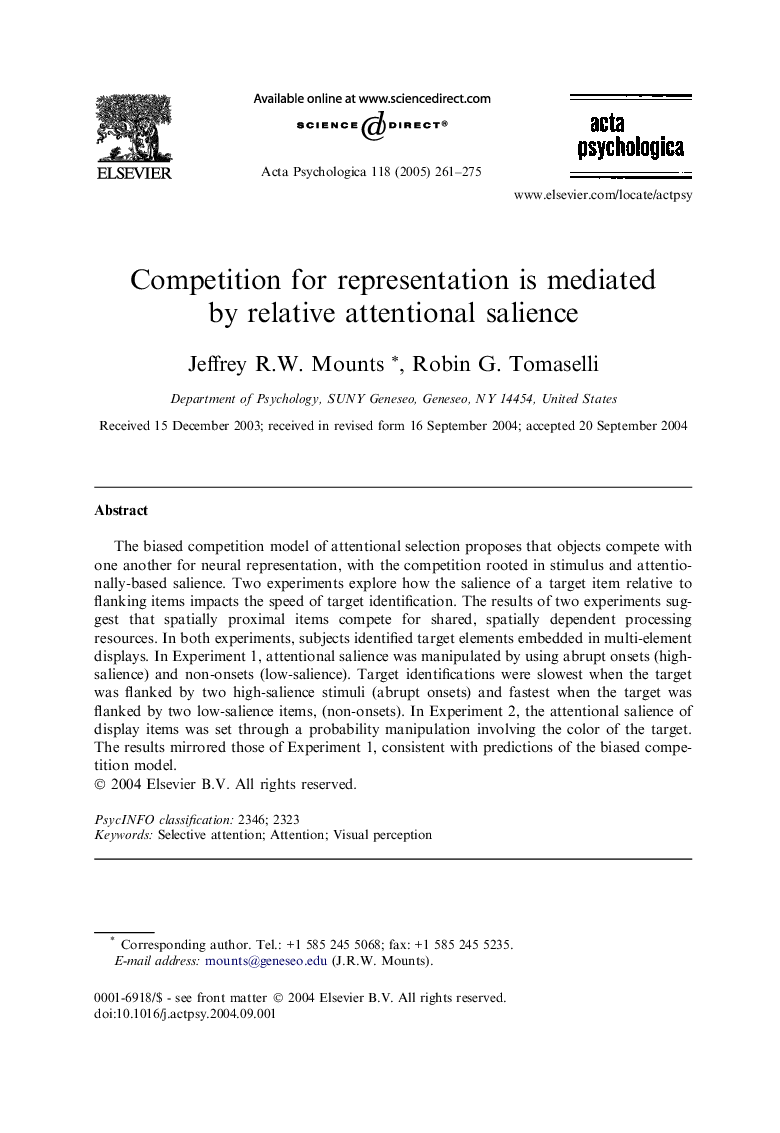| Article ID | Journal | Published Year | Pages | File Type |
|---|---|---|---|---|
| 10453915 | Acta Psychologica | 2005 | 15 Pages |
Abstract
The biased competition model of attentional selection proposes that objects compete with one another for neural representation, with the competition rooted in stimulus and attentionally-based salience. Two experiments explore how the salience of a target item relative to flanking items impacts the speed of target identification. The results of two experiments suggest that spatially proximal items compete for shared, spatially dependent processing resources. In both experiments, subjects identified target elements embedded in multi-element displays. In Experiment 1, attentional salience was manipulated by using abrupt onsets (high-salience) and non-onsets (low-salience). Target identifications were slowest when the target was flanked by two high-salience stimuli (abrupt onsets) and fastest when the target was flanked by two low-salience items, (non-onsets). In Experiment 2, the attentional salience of display items was set through a probability manipulation involving the color of the target. The results mirrored those of Experiment 1, consistent with predictions of the biased competition model.
Related Topics
Life Sciences
Neuroscience
Cognitive Neuroscience
Authors
Jeffrey R.W. Mounts, Robin G. Tomaselli,
